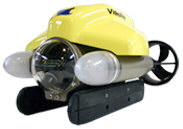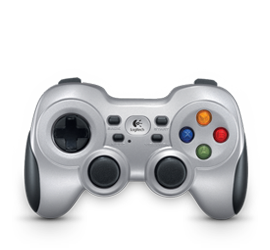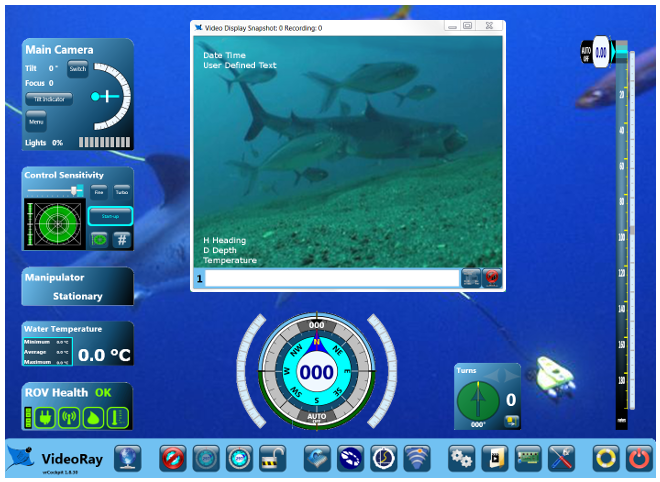Piloting Tactics
Piloting a VideoRay is generally easy in clear, calm water and can be learned quickly. Real world operations are generally more challenging and demanding. Pilots should be comfortable in clear calm water before attempting more challenging conditions. Unless you work in a controlled environment, such as tanks, you are likely to encounter low visibility, current, deep conditions, or even all three. Each of these takes special techniques or accessories.
 The following suggestions will help you advance your piloting skills. The following suggestions will help you advance your piloting skills.
- Use a light touch on the controls. The VideoRay is very agile and if you apply too much control input, you will tend to over steer or over shoot your objectives. This will often require reverse control input to compensate, which is inefficient.
- You should learn to operate the ROV by watching it on the surface and by watching only the video display. Expert pilots will often navigate on the surface to the desired area of operations before descending, but once the ROV is underwater, they may not be able to see it from the surface and must rely on the video from the ROV.
- Start out by practicing simple maneuvers like going in a straight line and making 90 degree turns.
- Also work on simple vertical maneuvers by following a line or piling. Tilt your camera down when diving and tilt it up when surfacing to see where you are going.
- Notice that when the ROV is on the surface and the camera is tilted up, you should be able to see above the waterline. This capability can be used to reference navigate using surface landmarks, like the sun, buildings, trees or vessels.
- While you can operate the VideoRay by yourself, it is a good idea to have another person help manage the tether - if you have too little tether in the water, you will have a hard time piloting the ROV, and too much tether can lead to tangles.
|












